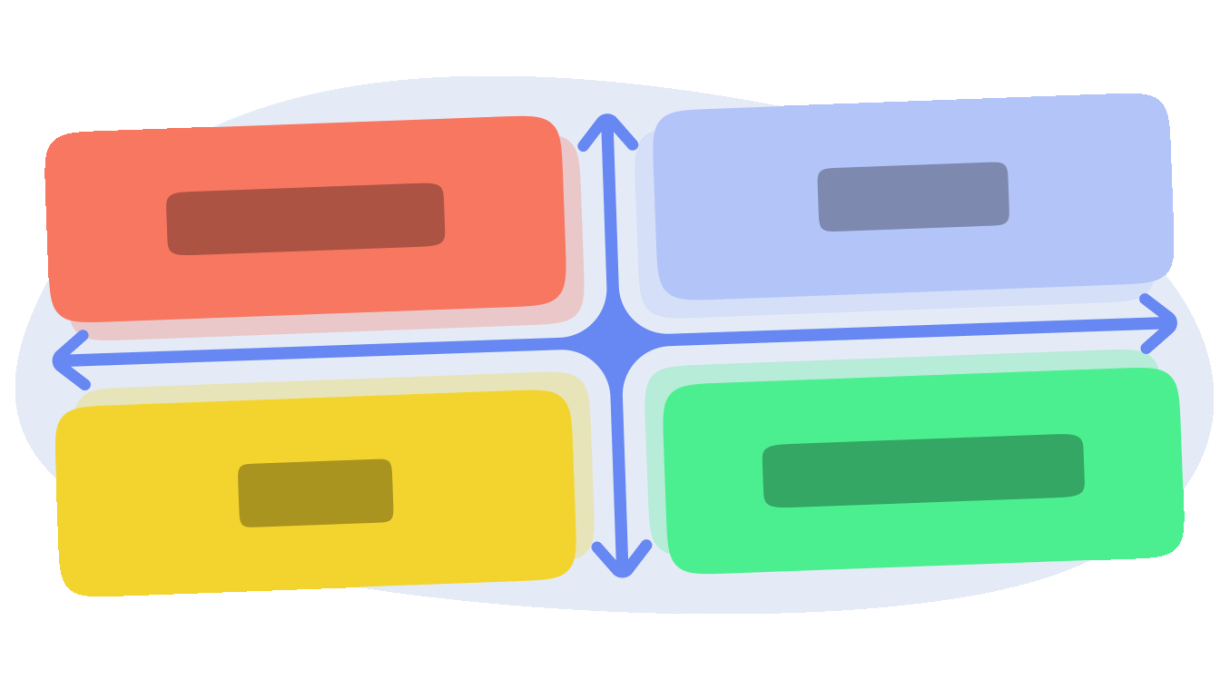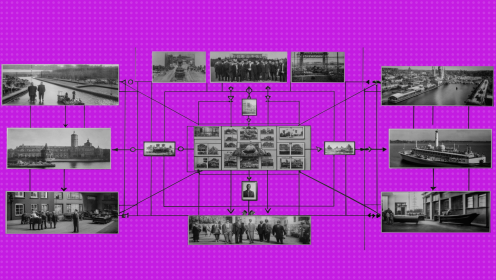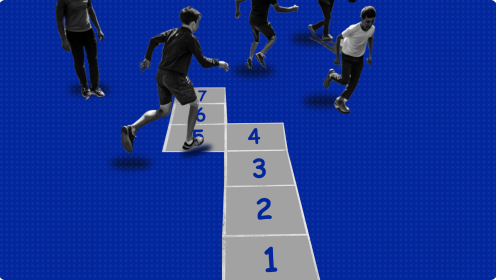Dwight Eisenhower was the 34th president of the United States. Before becoming president, he went through two world wars, ending his military career with the rank of general. Eisenhower knew something about efficiency, because not everyone can become a general, much less the president of the United States.
It is he who owns the phrase "Not all urgent matters are important and not all important matters are urgent", which best describes the principle of work named after him — the Eisenhower matrix.
What problems does the Eisenhower matrix help solve?
If you work without straightening up, but you don't have time for anything, then you have problems with goal setting. For example, you want to work abroad, but you do not find time to study English, which is necessary for the realization of this goal. Life is coming to a dead end.
You seem to realize that this is important for you and your career, but you can't do anything, because there are so many important things all the time! In fact, this is just an illusion. Not all cases are important or urgent. Some may well wait.
The Eisenhower matrix will help you figure out which tasks should be done first and which should be done later. By adhering to these simple principles, you will be able to do much more every day.
What is the essence of the Eisenhower matrix
This technique allows you to distribute the list of tasks depending on their urgency and importance. To do this, you need to ask only two questions to each item on the to-do list and answer them unequivocally "yes" or "no":
- Is it important?
- Is it urgent?
Divide a sheet of paper into four parts to get four identical squares. The vertical axis is importance (the higher, the more important), and the horizontal axis is urgency (the more to the left, the more urgent).
This is what the Eisenhower matrix looks like:
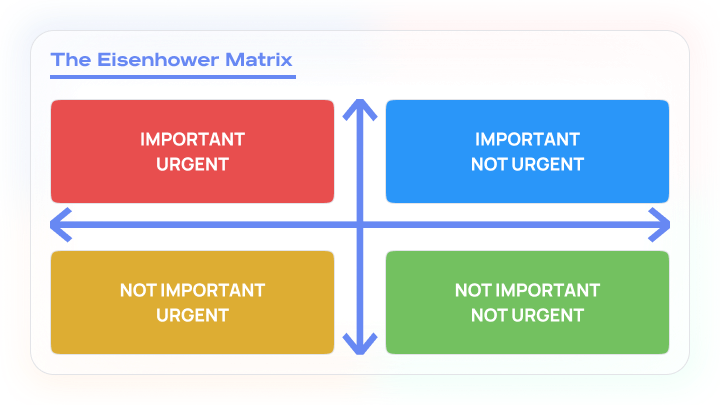
Quadrant A: important and urgent matters
- Things that can lead to trouble if they are not completed.
- Health-related issues.
- Cases whose non-fulfillment will negatively affect the achievement of goals.
With proper planning, your A quadrant will be minimally loaded or even empty. In order for the tasks not to get here, you need to focus on their timely implementation in the B quadrant.
Quadrant B: important, but not urgent matters
- The main activity.
In this quadrant there are tasks that are the most priority and promising for you. The one who performs these tasks on time will be able to achieve the greatest success, since he performs them calmly, without haste, and, therefore, with the highest quality.
Quadrant C: urgent, but not important matters
- Distractions.
There are urgent matters in this quadrant, but they will not help you achieve your goals. For example, it can be a meeting or a party that you can't miss out of politeness. This also includes various troubles that can not be avoided: car repairs, a burned-out light bulb, a broken faucet, etc.
Quadrant D: not urgent and not important things
- Useless (but the most favorite) things.
This group of cases is also referred to as time eaters, because they are not useful. Empty conversations during working hours, correspondence in social networks, watching TV shows, etc. This does not mean that you do not have the right to rest. It's just that the list of things to do here should be reduced, otherwise, alas, there will be no time left to achieve the goals.
For example, here is my to-do list for today:
- make a presentation on the work,
- study English,
- meet with a client,
- call a plumber,
- go to the movies,
- meet with a friend.
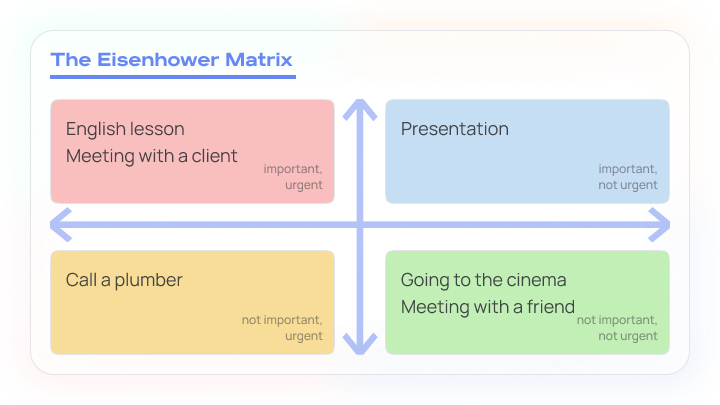
An english lesson and meeting with a client will fall into the A quadrant. In the B quadrant-a presentation on the work. In the C quadrant-call a plumber. And in the D quadrant-a trip to the cinema and a meeting with a friend. If I do not have time to do things from the D quadrant today, then I will transfer them to another day of the week — it's not scary. All the other things will have to be done today, otherwise there will be no avoiding trouble at work (and they can just dismiss me) and I will not pass the Toefl exam in English.
Who is suitable for the Eisenhower matrix
The Eisenhower Matrix is one of the simplest and most effective time management tools that anyone can use: both a simple office employee and the head of a large corporation.
If you want to be as efficient as possible and find time for the most important things, planning tasks according to the Eisenhower matrix will be very useful. It is impossible to have time to do everything at once, but it is quite possible to fulfill the most important thing.








